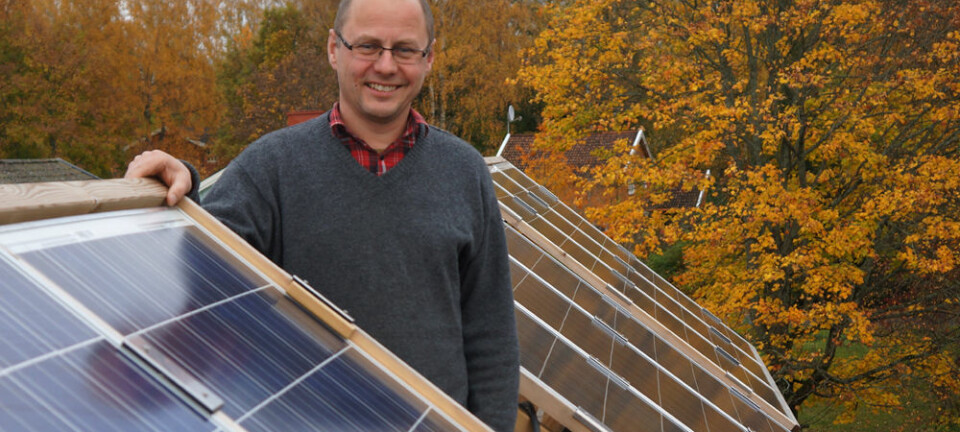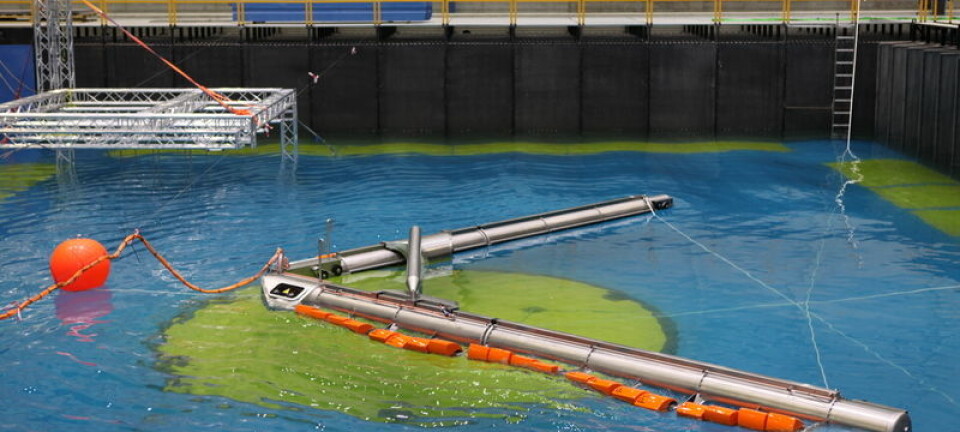An article from Norwegian SciTech News at SINTEF
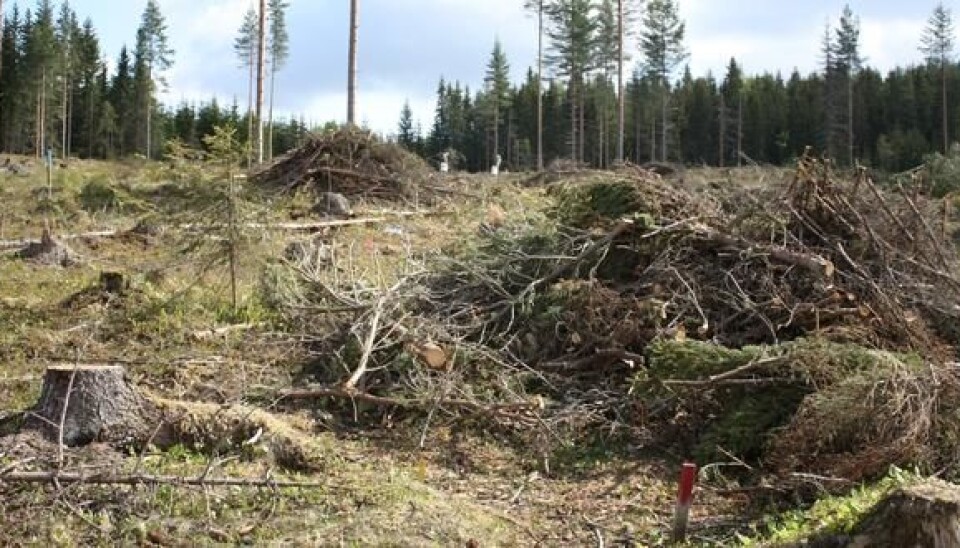
Top-class biofuel from the depths of the forest
Tops and branches from tree-felling sites are reborn in the laboratory as compact pellets. However, the energy industry will not act until the price is right.
Denne artikkelen er over ti år gammel og kan inneholde utdatert informasjon.
We have all seen it when we walk in the forest after the lumberjacks have been there. When the logging machinery moves on, what it usually leaves behind are piles of branches and tops.
Norway possesses major unexploited energy resources in the form of these branches and tops – known in their Norwegian acronym as GROT. Samples of this logging waste is regularly transformed into fuel.
In the raw form in which the biomass arrives at the laboratory, it is regarded as a problematic and therefore low-value fuel. But when the scientists and technicians have finished processing it, they are left with a valuable source of heat – ready for use in industrial heating furnaces that are currently fuelled with wood pellets or chips, and for domestic pellet stoves.
The transformation is effected via a process called torrefaction, a sort of extreme sauna for timber and vegetation.
Problematic raw material
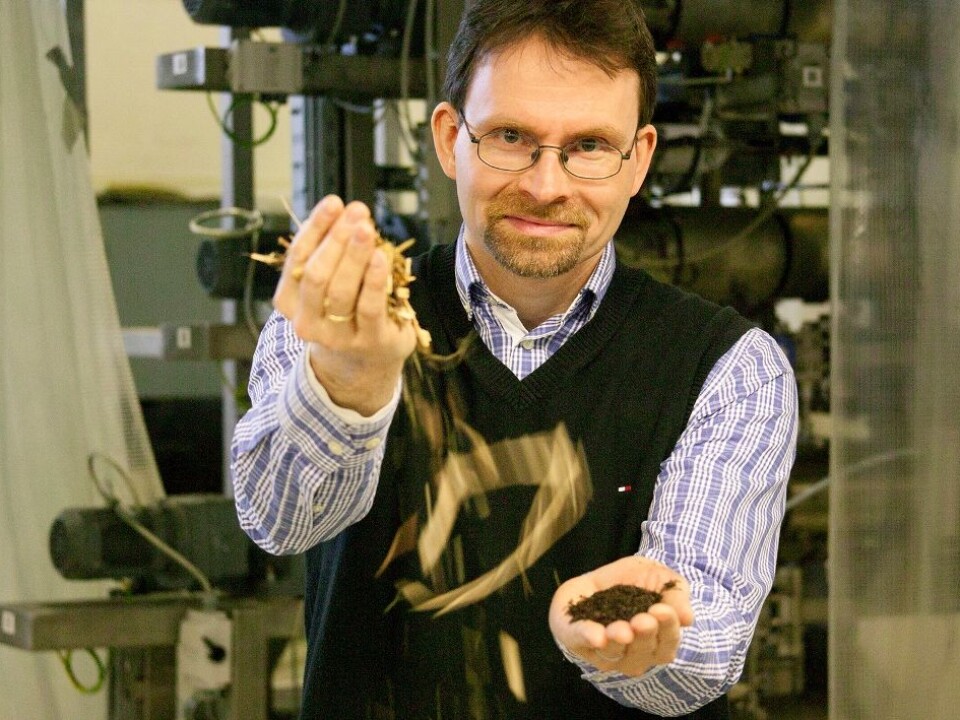
The raw material is fragments of wood with an admixture of spruce needles. This is chopped-up GROT from spruce logging.
“Cheap fuel, and Norwegian logging sites are full of it. But it is a poor-quality fuel, because it is so variable in composition,” says Senior scientist Øyvind Skreiberg.
If the GROT is tipped into the furnace, the woody component of the mixture may burn in one instant, bark and needles in the next.
“This mixture means that the efficiency and characteristics of the combustion process are extremely variable. In the worst case, they can destroy a combustion chamber,” says Skreiberg. Then he opens his other fist and shows us the evidence that the problem is capable of being solved.
Fibre broken down
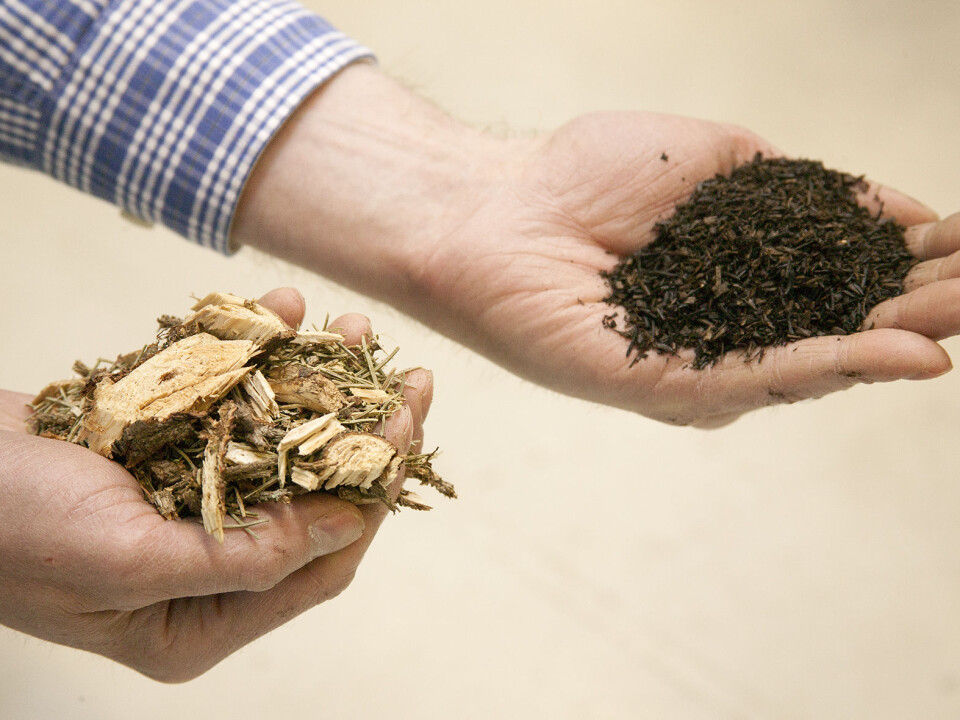
When the chopped-up GROT has been subjected to torrefaction, it has become a fine-grained brownish-black mass. The transformation takes place in a laboratory reactor.
On its way through the highly insulated steel cylinders of the laboratory rig, the raw material has been heated to 275 oC. The heat treatment has broken down the fibrous structure of the biomass. According to Skreiberg, this has two benefits.
“In the first place, the torrefied material can easily be crushed into the powder that you can see here, which can be stirred around to form a homogeneous, and therefore combustion-friendly, mass."
"Secondly, this powder can be pressed into pellets with a high energy content per unit of weight and volume; in other words, it is also a transport- and storage-friendly fuel. Pellets of torrefied biomass can withstand getting wet, just like coal, and are very stable under storage."
Inexpensive raw material
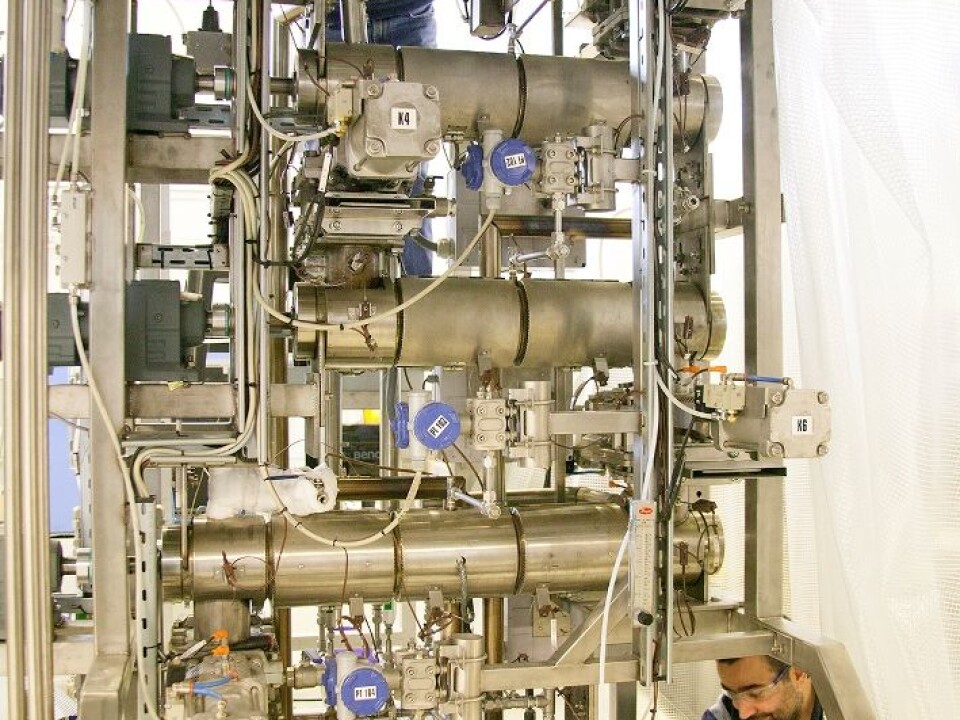
“But doesn’t torrefaction make the fuel too expensive?”
“This technique improves a biofuel that is cheap but problematic in terms of combustion technology, and makes it much easier to handle. There is already a market price for GROT, which is well below that of wood chips. We hope that the method will be competitive, precisely because of the low price of the raw material and the reduced transport costs that the saving in weight and volume make possible.”
“What about the heat that is used in the torrefaction process? How much energy does that steal from a load of biomass?”
“Not much, in fact. The volatile components that are released as gases from the raw material are combusted, to maintain the ideal process temperature, and as much as 90 percent of the energy in the raw material is retained by the torrefied material.”
“Green” coal
A race to develop torrefied material for fuels is under way in both Europe and North America, driven by a desire for a new timber-based fuel that can be burnt alongside coal in thermal power stations.
Many coal-fired power stations are already combining traditional wood pellets with the coal, with the aim of reducing greenhouse gas emissions.
According to Skreiberg, the reason why torrefied biomass pellets are interesting for this sector is that the combustion characteristics of the torrefied material are much more close to coal than biomass.
The scientist sees coal-fired power stations as a potential market for torrefied Norwegian GROT.
And he points to climatic benefits, because branches and tops are a CO2-neutral raw material that would otherwise have rotted on the ground and partly turned into methane, which is a greenhouse gas.
Price a decisive factor
Skreiberg believes that torrefied GROT will find a place in the Norwegian energy supply system, as fuel for both households and industrial heating furnaces. But what does the energy sector think?
Morten Fossum, business development manager in Statkraft Varme, says that it is impossible to predict the future of this energy source until it is clear what the cost of producing the fuel will be.
“Everything is a matter of price. If this fuel is cheap enough, it would be suitable for small and medium-sized combustion plants that use dry fuel.”
Nutrients
Fossum does not hide the fact that the quality of Norwegian GROT is poorer than it is in Sweden, where it is used as fuel much more than in Norway. He believes that the difference is largely due to the way in which the raw material is harvested and treated.
“If large-scale harvesting of GROT gets under way in Norway, this will mean that nutrients are also being removed from forest soil. In that case, we ought to look at the possibility of bringing its ash back to the forest. But at present, that is not permitted in Norway,” says Statkraft’s Morten Fossum.







